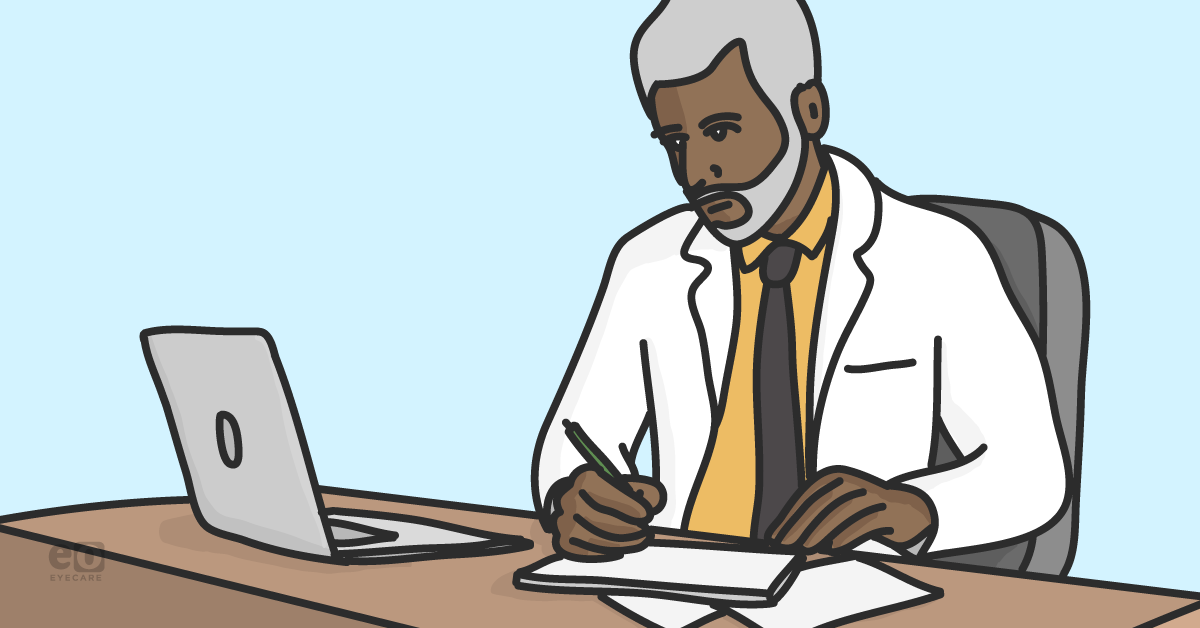In 2021, the American Medical Association (AMA), in cooperation with CMS, made the first significant changes in how documentation and billing are done for the E/M CPT codes (99202 through 99205 and 99211 through 99215) since 1997. The impetus for these changes was the “Patients Over Paperwork” initiative begun by CMS in response to physician complaints that the old documentation standards, used for
selecting the proper code to bill for patient encounters, required them to spend more time clicking EHR software buttons and copying and pasting information from prior office visits than personally interacting with patients.
The E/M documentation changes now require a “medically appropriate history and/or examination” (CPT 2022 Professional Edition) instead of the prior criteria which required specific elements of the History, Examination, and Medical Decision Making (MDM) be completed in order to bill the various CPT code levels. Providers may also now select an E/M code based on either Time or MDM.
E/M codes for low vision and traumatic brain injury services
The only Time which may be used to select an E/M code is the time spent by the doctor on the date of the service (DOS) for the patient. The amount of time spent by any ancillary staff for any pre or post-exam patient services does not count. The time spent by the doctor reviewing reports from other providers prior to seeing the patient on the DOS, face to face time with the patient, and time speaking or communicating with other specialists about the care of the patient on the DOS may all be counted towards the total time for the exam on that DOS.
Only the total face-to-face and non-face-to-face doctor time for that DOS has to be documented in the record. There is no need to detail the time spent during the various parts of the exam.
Once the doctor exceeds the maximum time allotted to the 99205 (60-74 minutes) or the 99215 (40-54 minutes) E/M codes, they may bill for any additional time using Prolonged Service codes. The 99205 and 99215 codes are the only E/M codes for which prolonged services may be billed.
2021 updates to Prolonged Services codes
In 2021, two different Prolonged Services codes were approved. The AMA developed the 99417 code for use when billing commercial insurers for prolonged services. CMS developed the G2212 code to be used when billing prolonged services for Medicare or Medicaid patients. These codes are billed in fifteen-minute increments so it is possible to have more than “One Unit” of these codes billed for a DOS, as we will show in the coding tables.
The way the two codes are billed is different. For the 99417 code, the first fifteen-minute unit of prolonged service time starts fifteen minutes after the minimum time required to bill a 99205, 60 minutes, or a 99215, 40 minutes. For the G2212 code, the first fifteen-minute unit of prolonged service time starts fifteen minutes after the maximum time defined for a 99205, 74 minutes, or a 99215, 54 minutes.
The following tables show examples for the billing of these codes.
99417
| 99205 (60-74 Minutes) | |
|---|
| 99215 (40-54 Minutes) | |
| 75-89 Minutes | Bill 99205 + 99417 x 1 |
| 90-104 Minutes | Bill 99205 + 99417 x 2 |
| 55-69 Minutes | Bill 99215 + 99417 x 1 |
| 70-84 Minutes | Bill 99215 + 99417 x 2 |
G2212
| 99205 (60-74 Minutes) | |
|---|
| 99215 (40-54 Minutes) | |
| 89-103 Minutes | Bill 99205 + G2212 x 1 |
| 104-118 Minutes | Bill 99205 + G2212 x 2 |
| 69-83 Minutes | Bill 99215 + G2212 x 1 |
| 84-98 Minutes | Bill 99215 + G2212 x 2 |
As mentioned previously, the doctor does not have to detail the time spent on each individual part of the exam. A simple note on the record, such as “Total provider time for exam was 95 minutes” is sufficient.
However, in order to justify the amount of time noted, there must be sufficient documentation in the record of the services the doctor provided on the date of service. If that is not done, the exam would most likely fail on audit.
For example, for a
low vision examination, the doctor should document the review of reports and diagnostic test results from the referring doctor in addition to recording the Chief Complaint and History of Present Illness they conduct on the DOS. A general description of the examination performed and the various low vision devices evaluated and the results of those evaluations should also be recorded.
Patient counseling, along with an impression and plan should also be documented. If a report to the referring provider was done on the same DOS, that should be documented. There should be a note in the record that any time spent doing a basic refraction for the patient is not included in the total time since the 92015 is a separately billable code from the 99205 form 99215 codes.
In the past, for providers who deal with complex patients, it was difficult to
properly bill for extended examinations. With the addition of these two new codes, it is now easier for those providers to be properly reimbursed for their services. However, with the ability to more easily bill for prolonged services, it is more important than ever for providers to develop excellent documentation habits because billing for prolonged services may result in a
higher risk of audits by insurers.
